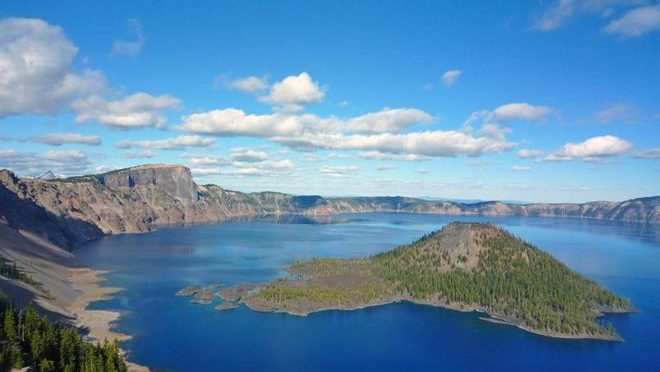Early one incense-breathing morning, two of us rode over the hills and far away, through the fragrant pine wood and the undergrowth of laurel all in honey bloom, crossing an intervening river and the ridge beyond, and came down to the cañon that walls in Sprague River. Soon the vista widened, the river bottom became a meadow, and the meadow expanded until it became a valley, and the greensward of the hills blended with the rank growth of the meadow hay. Before noon we made thirty-six miles of distance, reaching Yainax, a spot historic in Indian annals, a very home of tradition. The valley here is truly beautiful, and the landscape comprises a coup d’oeil of mountain ranges, some of which bear snows that shimmer in the July sun, while others are green to the summit, clothed with the unfading pine. In the valley, close by the river, rises a butte of uneven outline, which seems to have been uplifted from the plain, and stands alone, striking in its isolation, but bearing no comparison in size and grandeur to the mountain ranges that occupy the distance. Yainax is not famous by comparison with other mountains, even though its name in the original means the mountain, the significance of which was that it was the mountain near which, in olden times–the halcyon days that were before the “Bostons” came–the tribes which were in amity met and held great annual fairs, where they traded and trafficked, feasted and danced, gambled and sometimes quarreled, and occasionally laid the foundations for deadly feuds. To this mountain’s base came the Columbia River Indians to exchange fleet cayuse coursers for slaves, to barter the blankets and knickknacks furnished by the fur company traders for the furs gathered by Modocs and Klamaths, and the bows and arrows so deftly made and so skillfully fashioned by the Pit Rivers. Yainax was a great slave mart in the long ago, for Klamaths and Modocs, being first cousins, and as kind and unkind as near relatives are apt to be, made war indiscriminately on weaker tribes and took captives to swell the importance of the Yainax fairs. Woe to Snakes and Pit Rivers, Shastas and Rogue Rivers, when Klamaths took the war path, more hungry for captives than for scalps. We can picture the gambling scenes where the thriftless scamps ventured all and lost all, and then staked some favorite captive beauty on the chance, and lost again.
There was horse racing at Yainax before there ever was racing at Long Branch. The Indian trains his courser for the race, and enters into the spirit of the turf with all the ardor of a veteran sportsman. How these grand fairs at Yainax became instituted no tradition tells, but there are many legends linking the past to the present, all of which point to the now silent butte as the point where once fashion and pride, thrift and spendthrift, luck and chance, held high carnival. There Indian beauties became the admiration of brave eyes, and there royal alliances were encouraged and consummated, for the blood royal of the vagabond tribes that half a century ago roamed the interior wilds was as particular in preserving the pure line, and in strengthening the bonds of amity, as eastern princes still are.


